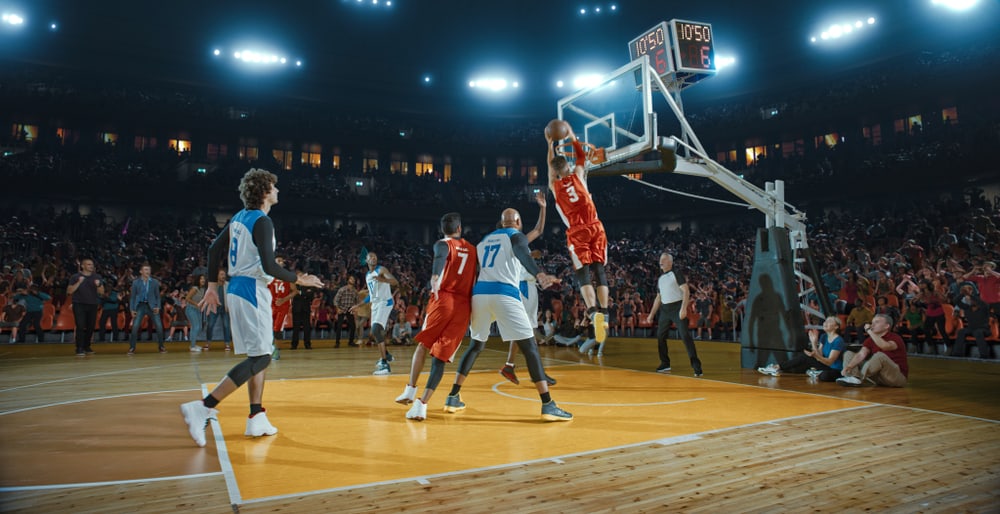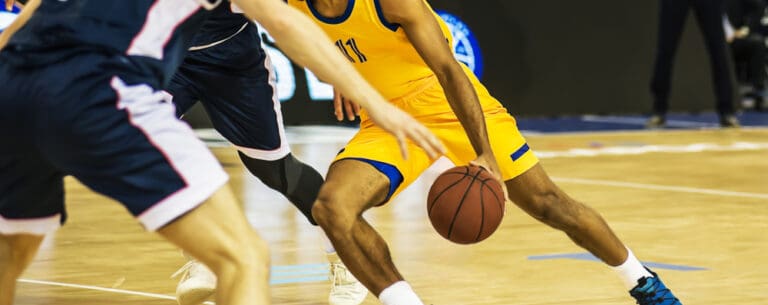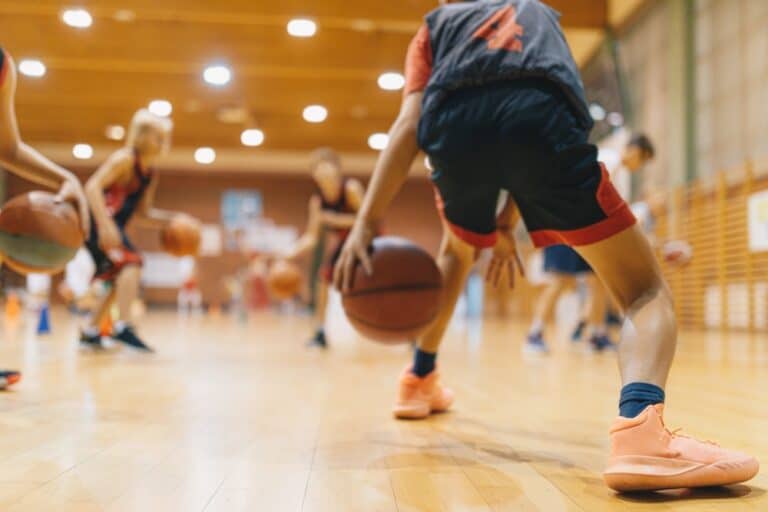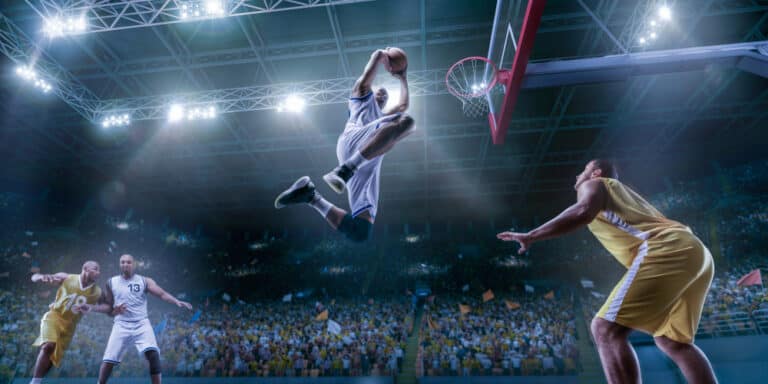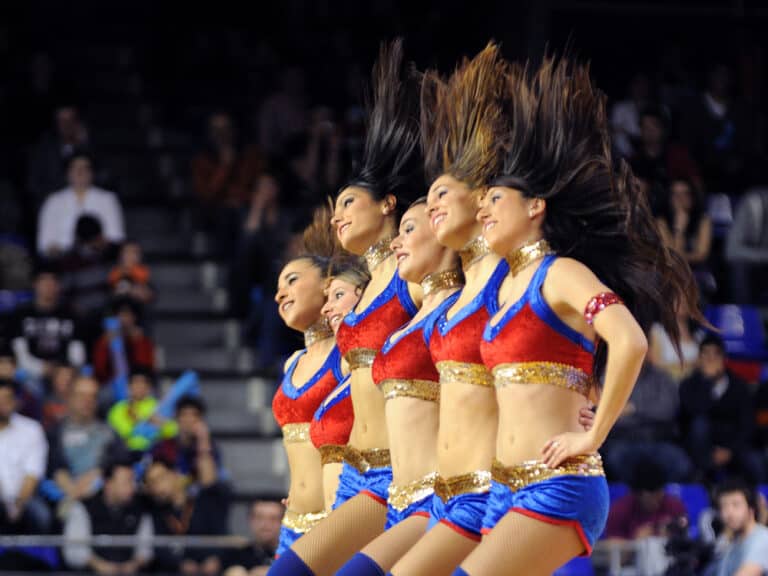Do Basketball Games Switch Sides? (All You Need To Know)
Although it may be expected in sports to see teams switch sides during a game, that isn’t the case for all sports. So do teams switch sides in basketball?
While it depends on the basketball league or divisions, nearly all basketball games require teams to switch sides after a set period. While some basketball games need teams to switch sides every quarter, most leagues follow the NBA’s rules, requiring teams to swap sides every half.
To better understand why basketball teams switch sides during a game, we will explore how teams are first assigned sides and the underlying reasons and strategy behind teams switching sides:
How Does A Basketball Team Choose Their Starting Side?
Different basketball divisions and leagues have their own rules, which determine which side of the court a basketball team will start, (note: in basketball, the side is known as the end.)
These rules and regulations may be subject to codified laws that state which end a team starts and later switches to, or it may be left to chance (such as a flip of a coin between team captains to decide which end they will start the game.)
The NBA has codified rules regarding ends, which fall under Rule No. 4, Section 1. Namely, the definitions surrounding the basket and backboard:
- The visiting team has the choice of baskets in the first half (namely, the end, which the starting team will score.) The basket selected shall be their basket throughout the first half.
- Teams change baskets for the second half, and overtime periods are considered extensions of the second half.
How Often Does A Basketball Team Switch Ends?
Different basketball divisions and leagues have rules which determine when basketball teams switch ends (typically, the regulations will allow teams to change ends every quarter or every half.)
As discussed above, Rule No. 4, Section 1 (b) of the NBA rules and regulations states that:
“Teams change baskets for the second half.”
However, it is important to highlight the second part of Rule No. 4, Section 1 (b) of the NBA rules and regulations, which states that:
“All overtime periods are extensions of the second half.”
Therefore, while the NBA (and numerous basketball leagues which follow the rules and regulations of the NBA) try to ensure each team has equal playing time across each end of the court, there are instances where overtime in the second half may result in increased play time in one end of the court.
While this may be slightly unfair in extraordinary circumstances, it is not an area of controversy in the NBA, nor has it been an area of debate in other sports, including swapping sides during a match (like water polo, rugby, or soccer.)
Do Home Benches Swap Ends During A Basketball Match?
While many sports require teams to swap sides throughout a game periodically, swapping players usually includes swapping the reserve bench and coaching staff on the sidelines in cooperation with swapping players on the playing field.
However, basketball is unique in that most leagues and divisions have a “home bench,” whereby the home team’s reserve players and coaching staff are given a designated seating area that does not swap sides with the players.
Furthermore, a home team’s fans typically sit behind the home bench, meaning the dynamics of home court support can shift depending on whether the home team is at a shooting end or a defensive end.
Therefore, there are some unique advantages and disadvantages for basketball teams and the ends at which they find themselves during a game (see below for further details.)
Why Do Basketball Teams Switch Ends During A Game?
There are two reasons basketball teams switch ends during basketball games. The first reason is that teams swap ends in the interest of fairness, and the second reason is to add further strategic and emotional advantages to a basketball game.
The first reason basketball teams switch ends during a game is in the interest of fairness and to denounce accusations of cheating or court tampering by the other team.
Therefore, because teams switch ends during a game, it is highly improbable that a home team could unfairly alter the court in favor of their team (such as by reducing the height of one end’s hoop or adding uneven texture’s to one end’s court.)
The reason is that not only does swapping sides mean that a team could easily determine court rigging during a basketball game, but any court rigging that would result in a net positive in the first half would automatically result in a disadvantage to the home team in the second half.
The second reason is that swapping ends results in each team having closer communication and support from their fans and benches during different halves.
For example, while a visiting NBA team may choose to start at the end of the court with the visitor’s bench to improve the support and communication with the bench and fans during defense, it means they will have reduced communication and support while they initiate an attack at the opposite end of the court.
Consequently, coaches, players, and managers must consider the importance of communication and support to their players from the bench and their fans during different game halves. Thus, teams must strategically consider their strengths and weaknesses during necessary periods of play.
Furthermore, open-air basketball games (e.g., games played outside or on semi-enclosed courts without roofs) need to consider the weather and how that will affect their team.
For example, while playing with your back to the sun may improve your performance in the first half while you are defending (since harsh sunlight can negatively affect the vision of attacking players,) it will likely be a hindrance to your team in the second half while attacking.
It is up to the players and coaches to consider these factors and to determine when they want to mitigate these harmful third-party elements and when to use them to their advantage!
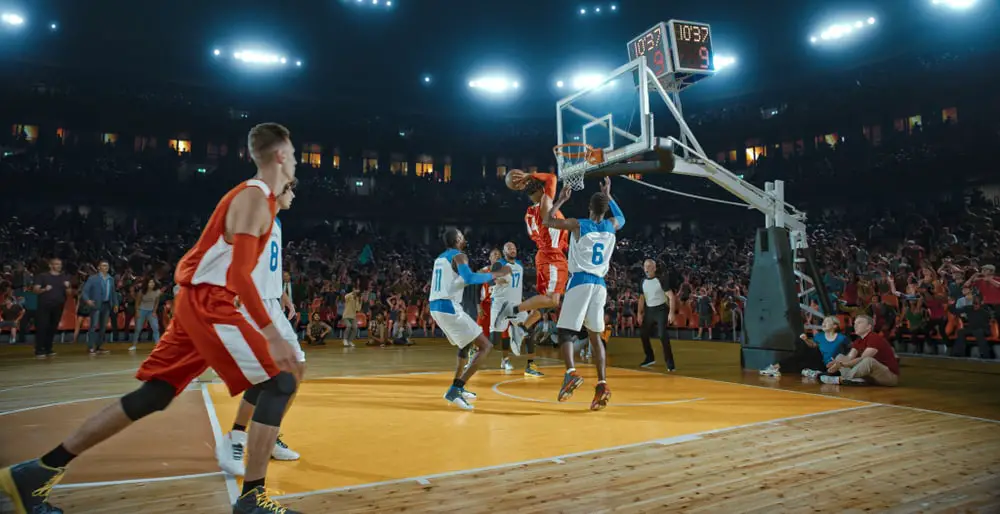
Conclusion
In conclusion, while it may seem like a simple formality. There are valid reasons and strategic concerns around basketball teams switching ends during a game!
References
- https://www.quora.com/How-many-times-do-they-change-sides-in-basketball
- https://www.reddit.com/r/nba/comments/77qcca/what_benefits_do_teams_get_when_they_switch_sides/
- https://www.quora.com/Why-do-NBA-teams-switch-ends-after-each-quarter-when-court-conditions-are-identical-unlike-an-outdoor-field-where-conditions-might-vary
- https://www.quora.com/What-determines-which-side-of-the-court-a-coach-chooses-for-the-first-half-of-a-basketball-game
- https://official.nba.com/rule-no-4-definitions/

